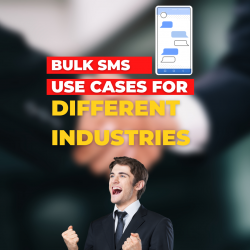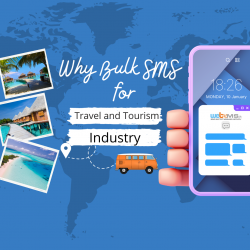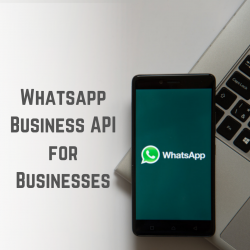
We’ve covered a lot of ground so far, including what Facebook marketing is, how to do it, and the different types of posts. In this Facebook marketing tutorial, we will, however, look at how to create a Facebook marketing strategy. So, in this final section, we’ll go over how to develop a Facebook marketing strategy. Don’t skip this section because it’s the most important part of Facebook marketing.
1. Identifying the Target Audience
We’ve already discussed this aspect of Facebook marketing above, but we’ll go over it again now. To understand your Facebook marketing audience, you must first understand your buyer’s persona. This persona is a representation of your ideal customer who can assist you in reaching your true goal. A buyer’s persona benefits every professional who is directly or indirectly related to the customer, regardless of domain or job role. This is because you can use this persona to effectively relate to and communicate with your audience. The same can be said for Facebook marketing. You can identify the type of graphics, content, and everything else by using the buyer’s persona.
You will be expected to conduct extensive research in order to create a buyer’s persona. This would entail analyzing customers, accepting referrals, and viewing prospects from various industries. You must also evaluate everything in terms of its relevance to the industry verticals.
Once you’ve done that, you’ll be able to see into your competitor’s persona.
1. Visual appeal
2. Post-production quality
3. Frequency of posting
4. Content caliber
5. Facebook participation
6. Facebook response time
If you want to go a little deeper and really execute the job of creating a buyer’s persona efficiently, you can use Facebook’s analytics tool. You can use audience insights in Facebook marketing to evaluate your audience.
2. Making a Content Calendar
Although we are focusing on Facebook marketing for the time being, there are several other social media channels to consider. A marketer is expected to promote the product through all of these channels. As a result, a marketer must keep up with trends, analyze market situations, develop strategies, respond to inquiries, and carry out a variety of other tasks. How can you keep track of everything if you don’t have a calendar? You can make a social media calendar with posts that should be published on specific days. It should also include a relevant mechanism for determining which posts require changes, which are scheduled, and so on.
You probably don’t remember everything. It simply cannot be done without omitting a few details.
Always keep a calendar to keep track of things in your Facebook marketing to avoid problems. This is as simple as it appears. You only need to create a spreadsheet.
When it comes to Facebook marketing, here’s what you should put on your calendar:
- Create separate tabs for each platform.
- Schedules should be mentioned separately for each platform.
- Columns with comments, campaign name, post time, postdate, and so on.
- Finally, a monthly sheet will be created to compile all of this data for analysis.
However, a Facebook marketing calendar will not help you avoid missing deadlines. To avoid changing the time of posting, you should schedule your posts. Simply put, you must automate this task.
If you don’t, what will you do when you have a client meeting but also need to post?
You get the idea!
Fortunately, scheduling on Facebook is straightforward. All you have to do is add an image and other relevant data to your Facebook page and schedule it instead of sharing it.
You can schedule multiple posts, but you should always plan ahead of time to keep track of them.
Aside from scheduling your posts, the time of the post is also important in Facebook marketing. And it appears that there are several questions to ask when it comes to time.
When should you post?
How frequently should you post?
What is the ideal number of posts per day?
The general rule to follow at first is to post between 1- 4 PM on weekdays and before noon on weekends. However, you will eventually need to use Facebook analytics to determine the best timing for your organization.
Also, keep in mind that you should be selective in your posting. You don’t want to overburden or bombard your audience with posts. To avoid losing Facebook likes, keep your consistency apt.
3. Creating Leads
Every company’s ultimate goal is to generate leads. This can be accomplished through Facebook marketing by:
1. Making available landing pages.
2. Keeping blog posts up to date on Facebook.
3. Using a lead generation offer to promote videos.
4. Participate in Facebook live.
To summarize, you can use any of the Facebook marketing techniques we’ve already discussed to generate leads on Facebook.
4. Monitoring Outcomes
To get a better understanding of any marketing campaign or strategy, results must be tracked. You can improve in the future if you use these insights.
1. Make use of page insights. It will show you a snapshot of the previous seven days, including page previews, page likes, page reviews, page views, recommendations, and so on. If you’ve recently launched a Facebook marketing campaign, you can easily determine its effectiveness using insights.
2. When marketing on Facebook, you can look at the like graph. Facebook will display an appealing representation of likes that can be filtered. You can establish a benchmark; view unlike, and examines paid likes.
3. Page views will inform you of the number of people who have viewed your page. You can use this to analyze traffic.
4. In 2016, Facebook launched its reactions feature. Since then, it has also allowed you to analyze these reactions. You can see how your followers reacted to your posts. This is excellent for analyzing user emotions in relation to a project.






